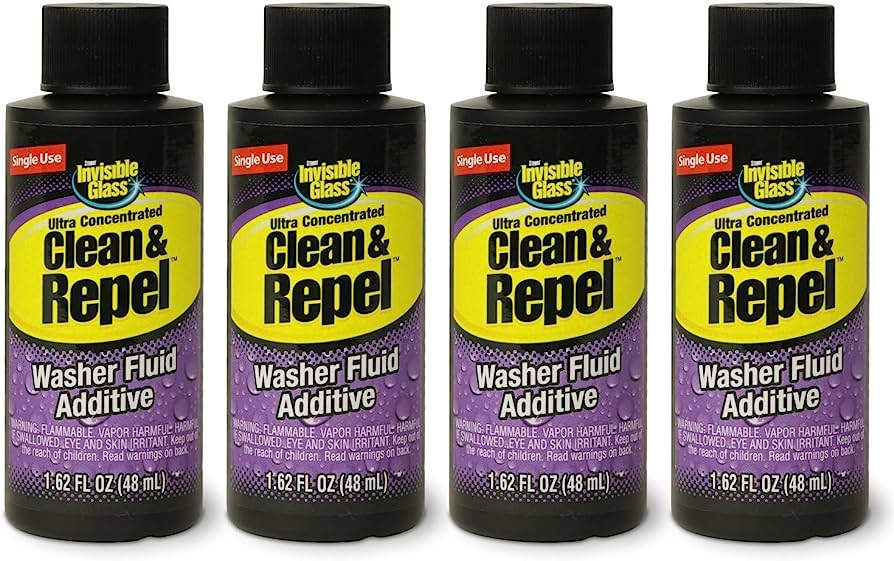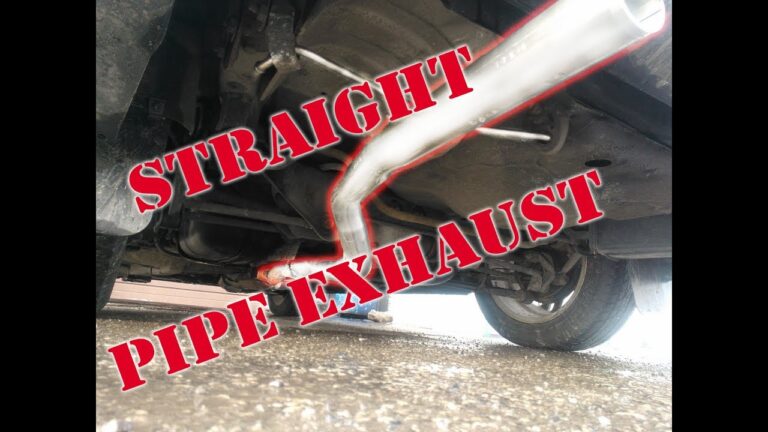Revive Your Car’s Visibility with a New Windshield Washer Fluid Tank
The windshield washer fluid tank is a container in a vehicle that stores the washer fluid used to clean the windshield. Keeping the windshield clean is critical for visibility while driving.
If the tank runs out of washer fluid, it can be dangerous to continue driving in certain conditions. Therefore, it is important to keep the windshield washer fluid tank topped up, especially in areas where there is a lot of debris on the roads.
The washer fluid is also particularly effective in cleaning bugs and dirt off the windshield quickly, making it an essential component for vehicle maintenance. Several different types of washer fluids are available in the market, including plain water and those containing additives that protect the windshield from freezing during colder months.

Credit: www.kxan.com
Signs It’S Time For A New Windshield Washer Fluid Tank
Driving with a clean windshield is essential for road safety. However, if your windshield washer fluid tank is out of order, it can cause a real inconvenience on the road. Here are some key signs to look out for, which could indicate it’s time to replace your windshield washer fluid tank.
Low Or Empty Fluid Levels
One clear sign that it’s time to change your windshield washer fluid tank is when you regularly notice low or empty fluid levels in the tank. When you top-up the windshield washer fluid, it does not last long, and you have to fill it up more often than you should.
If you can’t remember the last time you refilled the fluid, it is essential to consider replacing the tank.
• The Windshield Washer Fluid Level Being Low Or Empty
• Frequent Refills Needed
Visible Cracks Or Leaks
If you visibly notice any cracks or leaks in the windshield washer fluid tank, it is time to replace it. The crack may be tiny, but, over time, it can get worse and may start causing other issues in the vehicle.
• leaks from the tank could lead to low washer fluid levels
• cracks can worsen over time and lead to complete malfunction
Poor Spray Or Uneven Distribution
The primary function of the windshield washer fluid tank is to spray the fluid evenly across the windshield, which helps to clear debris and dirt. If the washer fluid spray is uneven or inconsistent, it could be time to replace the tank.
It is a clear indication that the spray nozzles or hoses are clogged or damaged, impairing the distribution of the fluid.
• Uneven Or Inconsistent Washer Fluid Spray
• clogged spray nozzles can be permanently damaged, affecting the distribution of fluid.
Unusual Noise When Activating The Washer Fluid
If you hear any weird noise when you activate the washer fluid, it is another sign that you should replace your windshield washer fluid tank. Unusual groans or whistles suggest that the pump may not be working well.
• strange whistling or grinding noise when you activate the washer fluid
• a malfunctioning pump can lead to unsatisfactory cleaning and even compromised vision.
By recognizing any of these signs, you can be sure that you need to replace the windshield washer fluid tank. A quick response to these signals can ensure your vehicle maintains optimal performance and keeps your windshield spotless and safe.
Choosing The Right Windshield Washer Fluid Tank
Types Of Windshield Washer Fluid Tanks In The Market
In the market of windshield washer fluid tanks, there are three major categories that are commonly used.
- Factory-installed tanks: These tanks are original equipment manufacturer’s (oem) installations. They vary in size and capacity, and are designed to work optimally with the car.
- Rubber bags: These are the most affordable tanks and easy to install. They are made of rubber and come in different sizes. They are prone to leaks and depreciation, however.
- Hard plastic tanks: These tanks come at an affordable price and last longer compared to rubber bags.
Factors To Consider When Selecting The Right Tank
Before purchasing any windshield washer fluid tank, it is necessary to keep in mind the following criteria:
- The model of the car: Different car manufacturers feature specific designs to fit their models.
- Replacement frequency: Hard plastic tanks tend to last longer, whereas rubber bags require frequent replacements.
- Location and season: Climate change significantly affects the fluid’s composition, so choose the suitable tank for the region and the respective weather conditions.
- Compatibility and interchangeability: Look for the windshield washer fluid tank that can be easily interchangeable and compatible with existing fluid systems.
Installation Requirements And Complexity
Installing the windshield washer fluid tank requires basic understandings of the car’s placement. Nevertheless, it is desirable to get an expert mechanic for installation to ensure proper and safe fitting. Here are some key takeaways for installing a windshield washer fluid tank:
- Systematic workflow: A step-by-step guide can simplify installation. Such guides are available online, yet getting assistance from a mechanic is preferable.
- Compatibility: The windshield washer fluid tank should be compatible with the existing fluid system and the model of the car.
- Safety measures: It is crucial to plan installation with the utmost safety in mind.
Cost Comparison For Various Models And Brands
Windshield washer fluid tanks come at an affordable price, and the selection is limitless. However, prices vary from brand to brand and model to model. Here are some comparisons of different windshield washer fluid tanks in the market:
- Oem tanks: Oem tanks tend to be the most expensive as they are uniquely designed to fit their respective model and require expert installation.
- Hard plastic tanks: They are affordable and enjoy an extended life span compared to rubber bags.
- Rubber bags: They are the least expensive but require frequent replacements due to depreciation.
By keeping the aforementioned factors in mind, one can choose the appropriate windshield washer fluid tank that meets the need, budget, and preference.
Installing A New Windshield Washer Fluid Tank
Overview Of The Installation Process
Installing a new windshield washer fluid tank may seem daunting, but it’s a simple process that can be completed in a few straightforward steps. Here are the key points to keep in mind when carrying out the installation:
- First, locate the old washer fluid tank and remove it from the vehicle.
- Next, prepare the new washer fluid tank by ensuring it has the necessary components and parts.
- Secure the new tank in place, being careful to properly connect the necessary hoses and electrical connections.
- Finally, fill the new washer fluid tank with appropriate fluid and check for proper operation.
Required Tools And Materials
Before beginning the installation process, make sure you have the following tools and materials on hand:
- New windshield washer fluid tank
- Wrenches or socket set
- Screwdrivers
- Pliers
- New hoses and connectors (if necessary)
- Appropriate fluid for the new tank
Step-By-Step Instructions For Installation
Here is a step-by-step guide to installing a new windshield washer fluid tank:
- Locate the old washer fluid tank in your vehicle and use a wrench or socket set to remove it.
- Carefully inspect the new washer fluid tank to ensure all necessary components are present.
- Connect hoses and electrical connections as needed on the new tank, being sure to follow manufacturer recommendations.
- Secure the new tank in place, using screws or bolts as necessary.
- Fill the new washer fluid tank with the appropriate fluid, keeping in mind any manufacturer recommendations.
- Test the new tank to ensure proper function, including testing sprayer nozzles and wiper operation.
Common Pitfalls To Avoid
While installing a new windshield washer fluid tank is a relatively straightforward process, there are some common mistakes or issues that can arise. Here are some pitfalls to avoid:
- Failure to properly connect hoses and electrical connections can lead to leaks or malfunction.
- Improper securing of the new fluid tank can cause it to become dislodged, leading to further damage or replacement.
- Overfilling the new tank with fluid can lead to leaks or malfunction.
- Failing to thoroughly test the new tank for proper function can lead to issues down the road.
Troubleshooting Tips For Post-Installation
After installing a new windshield washer fluid tank, there may be some troubleshooting necessary to ensure proper function. Here are some tips to help troubleshoot:
- If the sprayer nozzles are not working, ensure proper connection of hoses and electrical connections.
- Check for leaks or loose connections that may cause fluid to spill or drain improperly.
- Verify that the new tank is properly secured and connected to the vehicle.
- If wipers are not functioning properly, ensure proper alignment and installation of the wiper blades.
Remember, if you encounter issues during or after the installation process, consult a professional mechanic or refer to the manufacturer’s recommendations to ensure proper function and safety.
Maintenance And Upkeep Of Your New Windshield Washer Fluid Tank
Windshield Washer Fluid Tank
If you’re a car owner, you know that maintaining your vehicle is crucial to its performance and longevity. The same holds for your windshield washer fluid tank, which plays a significant role in keeping your windshield clear and enhancing visibility while driving.
In this section, we’ll explore the essential tips for maintaining and keeping your windshield washer fluid tank in optimal condition.
Importance Of Regular Maintenance
Like other parts of your vehicle, your windshield washer fluid tank requires regular maintenance. Checking the tank’s level, cleaning the nozzles and replacing the fluid, and addressing fuse or pump issues should all be performed periodically to maintain your vehicle’s optimal performance.
Regular maintenance ensures:
- Consistent fluid spray
- Clear visibility while driving
- Longevity of the windshield wipers
Recommended Maintenance Schedule
To keep your windshield washer fluid tank working correctly and to avoid any significant issues, it should be periodically checked and maintained. Here is a recommended maintenance schedule for your windshield washer fluid tank:
- Check the fluid level every 1-2 weeks
- Replace the fluid every 6 months or as needed
- Clean the nozzles every 3 months
- Check the fuse and pump annually
Basic Maintenance Tasks
Performing basic maintenance tasks can keep your windshield washer fluid tank working correctly and reliably. Here are some simple maintenance tasks you can do:
- Check the fluid level of the tank regularly
- Use windshield washer fluid and avoid using water as it can freeze and damage the system
- Clean the nozzles and remove any debris that might clog them
- Use a soft brush to clean around the bottom of the reservoir
Troubleshooting Common Issues
Windshield washer fluid tanks can develop some common issues that require troubleshooting. Here are some of the common issues you might encounter and their fixes:
- Weak fluid spray due to clogged or dirty nozzles – clean the nozzles using a needle
- Fluid leakage – check for loose or disconnected hoses and tighten them
- Broken or damaged reservoir – replace the reservoir
- No fluid spray – check the pump fuse and replace it if damaged
Upgrades And Modifications For Enhanced Performance
You can upgrade and modify your windshield washer fluid tank to enhance its performance. Here are some upgrades and modifications you can consider:
- Use heated washer fluid systems for cold climates
- Use specialized washer fluid systems designed for specific weather or road conditions
- Replace the standard pump with a high-performance pump to increase fluid pressure
Maintaining and keeping your windshield washer fluid tank in optimal condition should be an integral part of maintaining your vehicle. By regularly checking and performing maintenance tasks, you can ensure consistent fluid spray and clear view while driving. Additionally, troubleshooting common issues and upgrading your system can enhance performance and ensure the longevity of your washer fluid tank.
Frequently Asked Questions On Windshield Washer Fluid Tank
How Do I Fill My Windshield Washer Fluid Tank?
To fill your windshield washer fluid tank, locate the tank cap under the hood, remove it, and pour the fluid into the tank. Be careful not to overfill the tank.
What Type Of Windshield Washer Fluid Should I Use?
It’s recommended to use windshield washer fluid that matches your climate. For colder regions, choose fluid with lower freezing points, and for warmer areas, choose fluid with higher cleaning capabilities.
Why Does My Windshield Washer Fluid Not Spray?
Several reasons could cause the washer fluid not to spray, such as a clogged nozzle, a malfunctioning pump, or a broken hose. Check these components to determine the root cause of the problem.
How Often Should I Refill My Windshield Washer Fluid Tank?
It’s recommended to refill your windshield washer fluid tank every three months or when the fluid level is low. Refill more often if you use your washer system more frequently or live in areas with high dirt accumulation.
Can I Use Water Instead Of Windshield Washer Fluid?
Using water instead of windshield washer fluid is not recommended as it can freeze, damage the washer pump, and even cause the tank to corrode. Use dedicated washer fluid to achieve best cleaning results.
Conclusion
So, that’s it about the windshield washer fluid tank that every driver must know. Keeping the tank clean, full, and well-maintained is crucial for ensuring optimal driving safety. You do not want to be in a situation where you run out of washer fluid during a long journey or a heavy rainstorm.
As mentioned earlier, a malfunctioning tank can affect the visibility and cause accidents. Therefore, it’s better to keep an eye on the fluid level and refill it when required. Don’t forget to inspect the wiper blades and hoses regularly as well.
By doing this, you can extend their lifespan and save money on repairs. With the tips and information shared in this article, you can prevent common issues related to the windshield washer fluid tank and enjoy a safe and comfortable driving experience.






